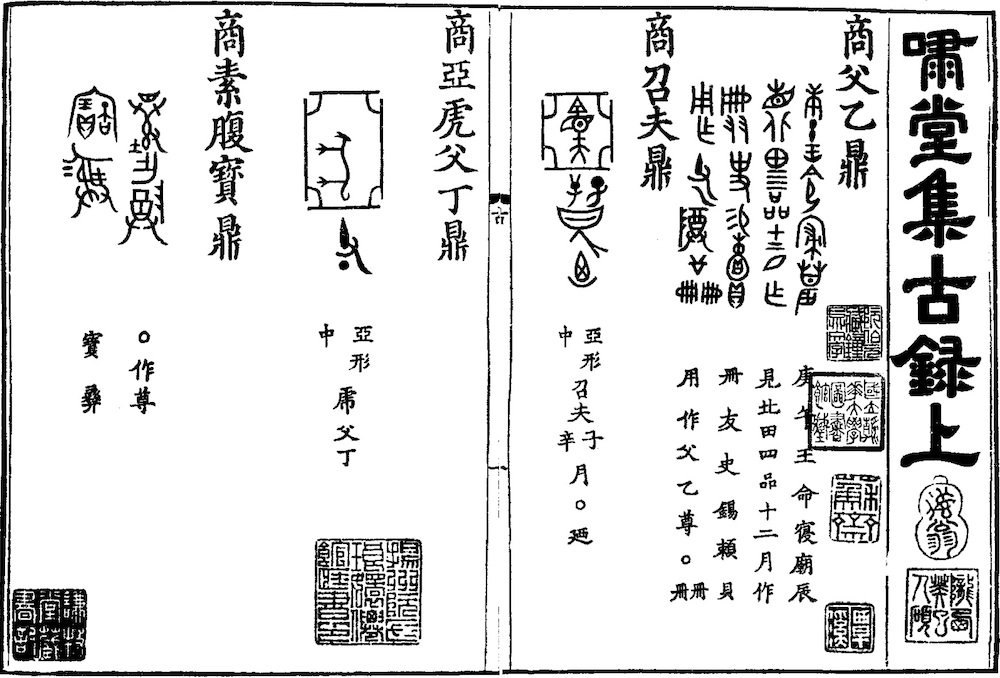Xiaotang jigu lu 嘯堂集古錄 is a catalogue of antiques collected by Wang Qiu 王俅 (also written 王球, fl. 1146), courtesy name Zibian 子弁, Kuiyu 夔玉 or Kuishi 夔石, from Rencheng 任城 (today’s Jining 濟寧, Shandong), who lived during the Southern Song period 南宋 (1127-1279).
The book of 2 juan length lists the inscriptions of 345 bronze vessels and objects from the Shang 商 (17th-11th cent. BCE) to the Han period 漢 (206 BCE-220 CE), among them tripods (ding 鼎), pots (zun 尊, yi 彝), jars (you 卣), bottles (hu 壺), beakers (jue 爵, jia 斝, gu 觚, zhi 卮, zhi 觶, jue 角), round boxes (dun 敦), square boxes (fu 簠), steamers (yan 甗), kettles with foot (gui 簋), seals (yin 印), mirrors (jing 鏡), basins (xi 洗), bells (zhong 鐘), and many types more. Each inscription is imitated according to the appearance on the objects, and transcribed into modern characters. Apart from bronze objects, the catalogue includes more than 30 inscriptions of seals. The objects are listed according to the order in which Wang Qiu acquired or obtained his collectibles. Among them, many appear to have been fakes, like the "inscription of the tomb of the Duke of Teng" (Teng gong mu ming 滕公墓銘). The transcriptions of the inscribed texts are often abbreviated, particularly those of mirrors. There are no illustrations of the objects themselves.
 |
Four reproductions of Shang-period tripods with transcriptions. The square cartouche is usually transcribed as 亞, without representing the meaning of this particular word. |
Early prints and manuscript versions from the Song 宋 (960-1279), Yuan 元 (1279-1368), and Ming 明 (1368-1644) periods survive. The most important editions are a Qing-period 清 (1644-1911) print from 1812 by Master Zhang 張氏 of the Zuijing Studio 醉經堂 (which includes critical comments), and the versions in the series Siku quanshu 四庫全書, Sibu congkan xubian 四部叢刊續編, Baiyilu jinshi congshu 百一廬金石叢書 and Xu guyi congshu 續古逸叢書.